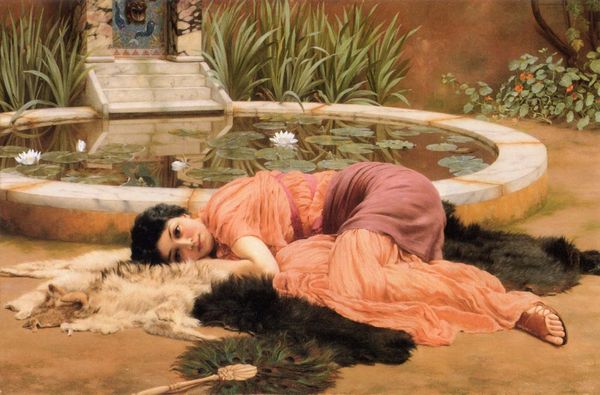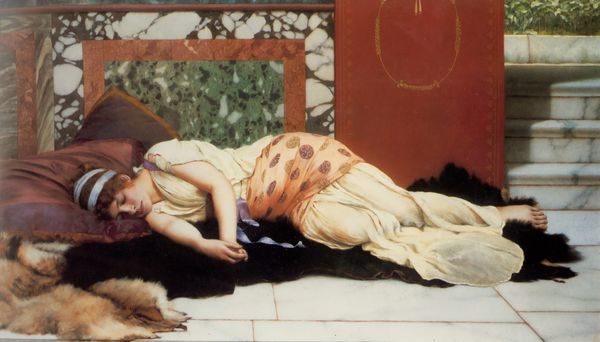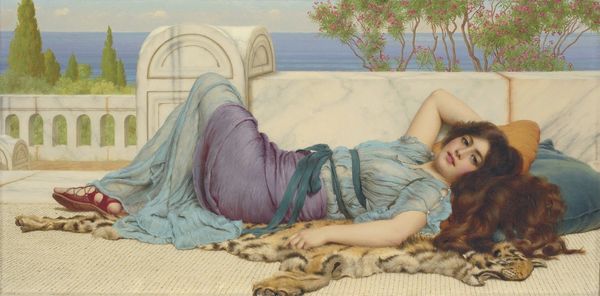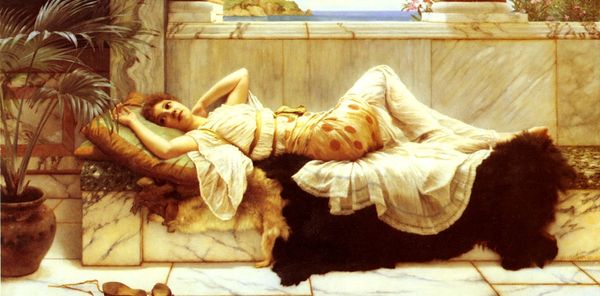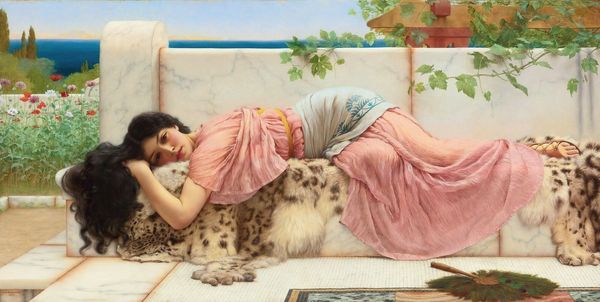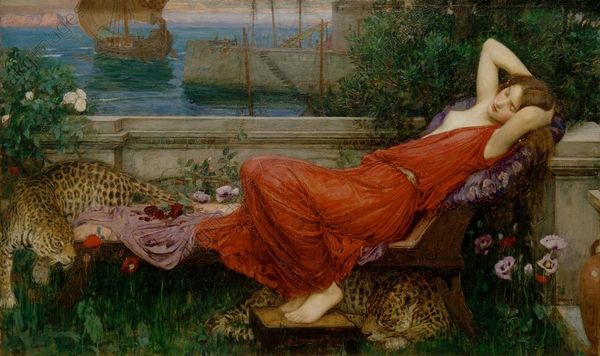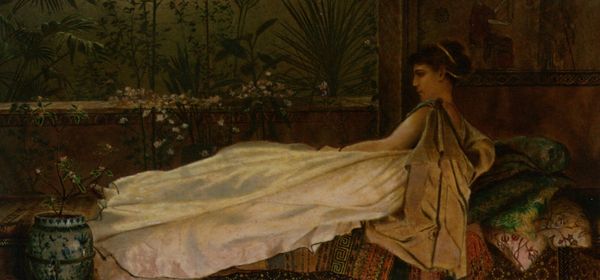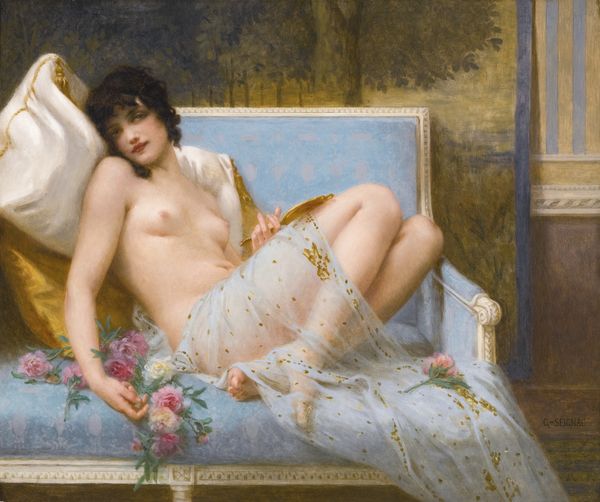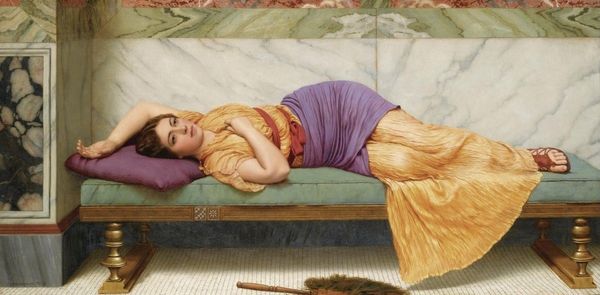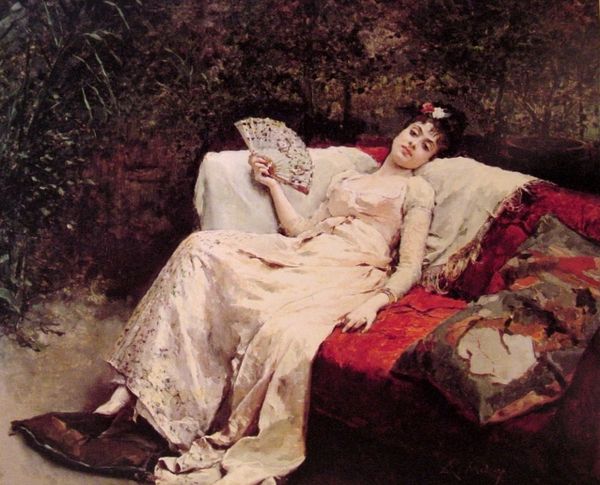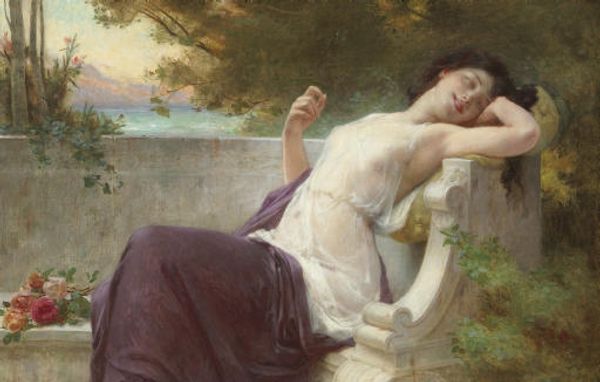
Copyright: Public domain
Editor: John William Godward's "A Cool Retreat," created around 1910. It strikes me as incredibly serene, a perfect captured moment of quiet contemplation. What do you see in this piece? Curator: I see a fascinating echo of cultural memory, don't you? Godward, working at the dawn of the 20th century, reaches back to classical antiquity, but it's not just a surface-level imitation. Consider the reclining figure by the fountain. The fountain is adorned with an infantile dragon. What associations might that imagery carry with it? Editor: A sense of mythical innocence, maybe? Something timeless? Curator: Precisely. It taps into our collective understanding of the past as a space of idealized beauty and ease, where even fantastical beasts are benign. The pigeons, for instance, aren't simply birds, they are representative of love, but what do they do for this painting as a symbol? What’s interesting about them in comparison to the statuesque, serene female form? Editor: I suppose it makes her seem even more still by comparison. They bring an immediacy and connection to nature that the statues lack. Curator: And the use of light…notice how it softens the scene, further enhancing that feeling of timeless beauty. This idealization wasn't just about aesthetics; it was a way of coping with a rapidly changing modern world, don't you think? The symbolic contrast allows the woman in "A Cool Retreat" to occupy the viewer's mind beyond beauty by association. Editor: Absolutely. I never considered how intentional that contrast between the still figure and the lively birds would make me feel! Curator: Seeing art is always seeing an entire world, isn't it? Editor: It truly is. It goes far deeper than what's on the surface.
Comments
No comments
Be the first to comment and join the conversation on the ultimate creative platform.
